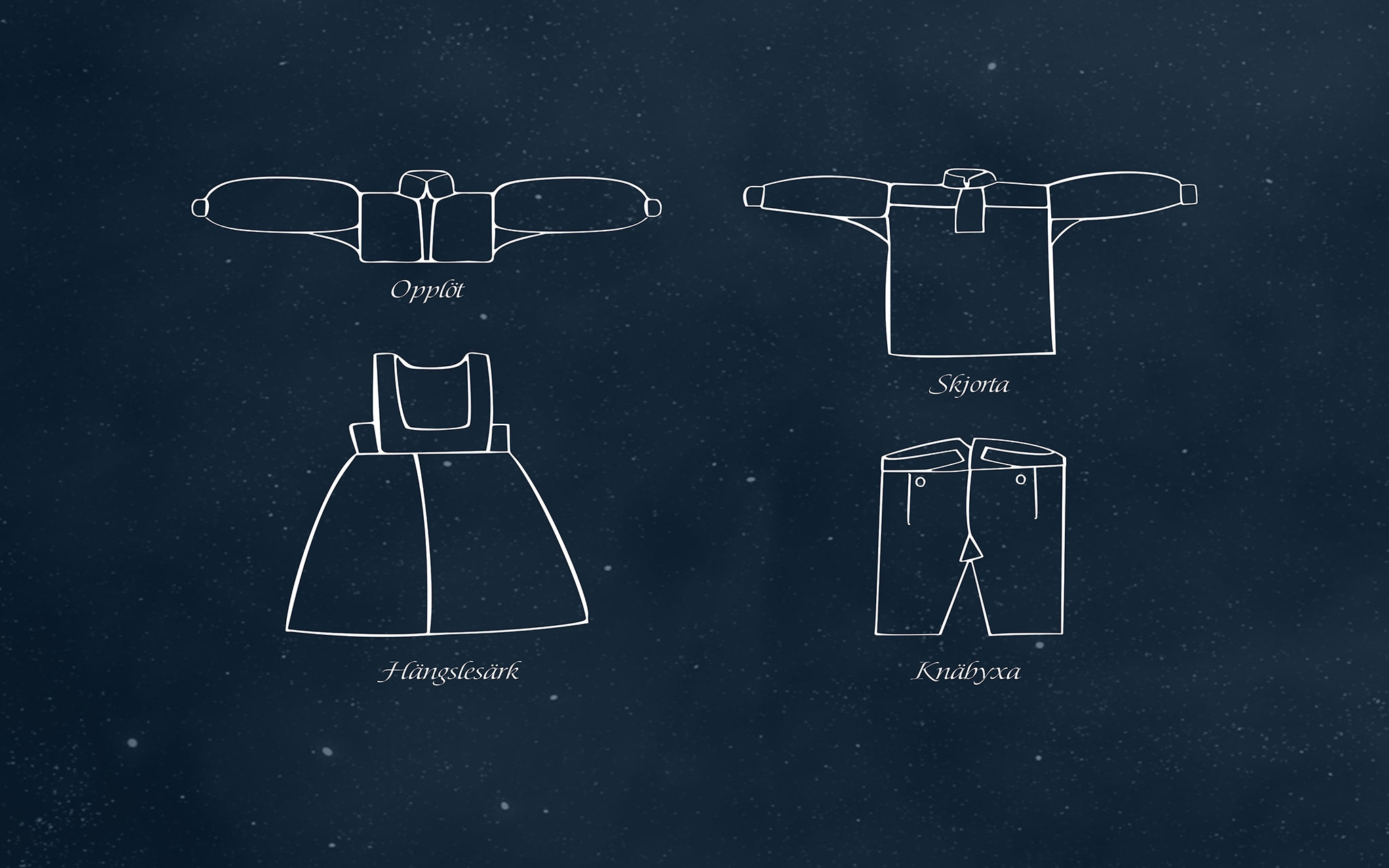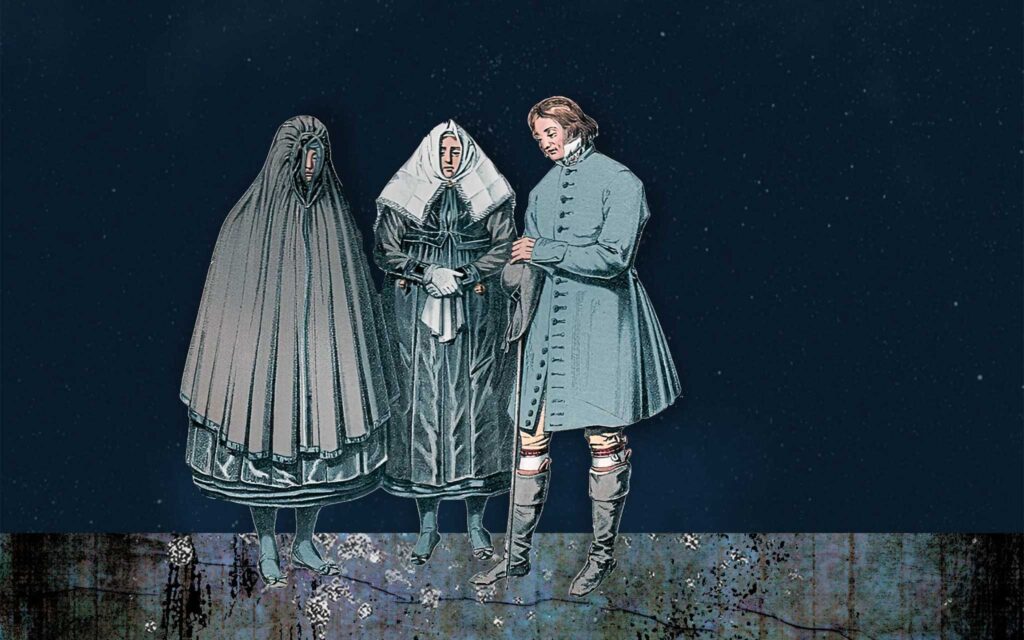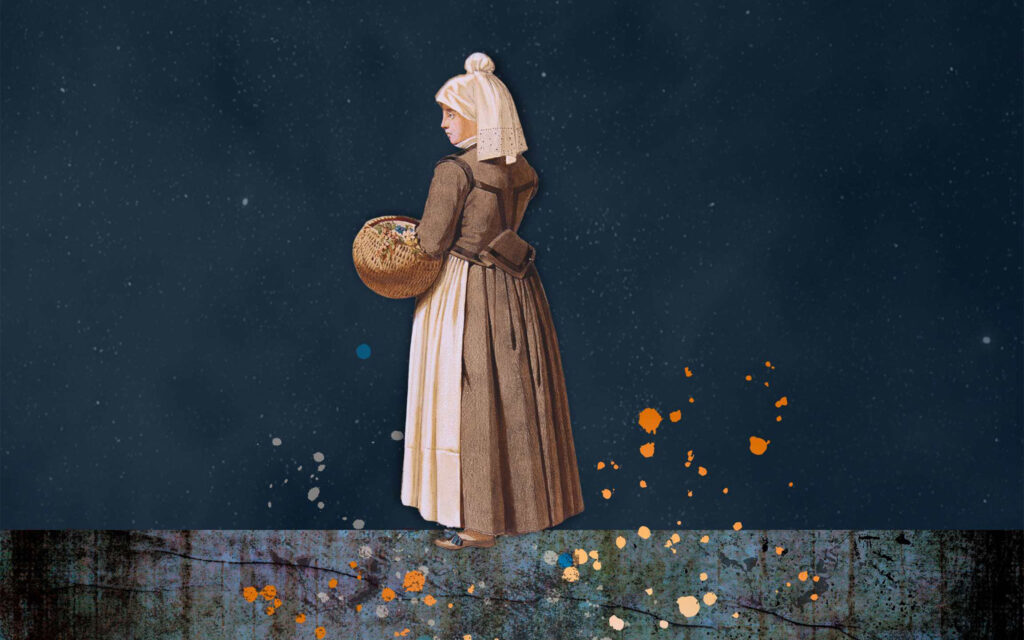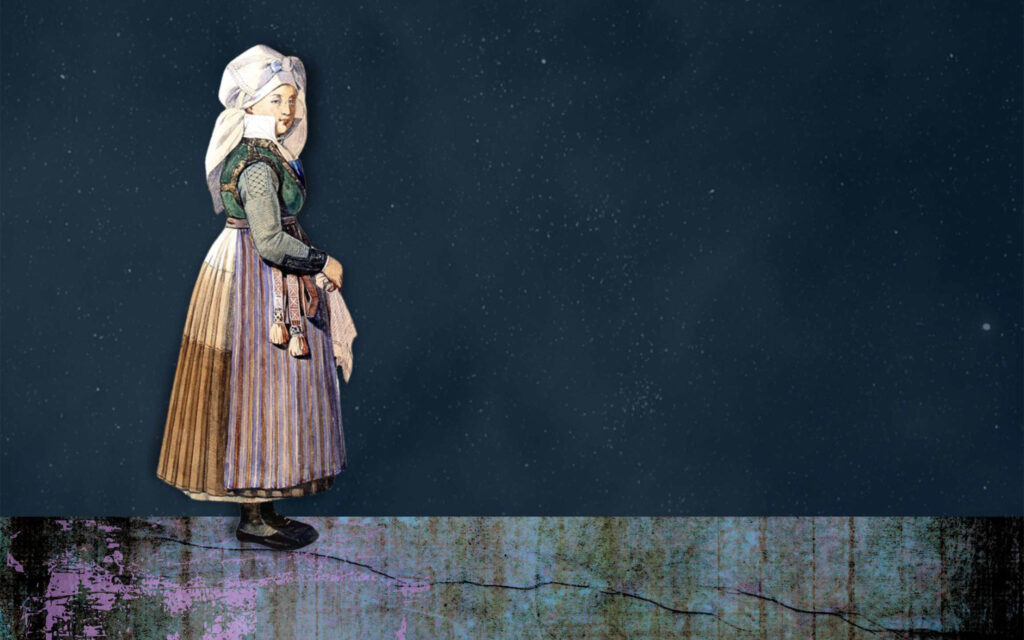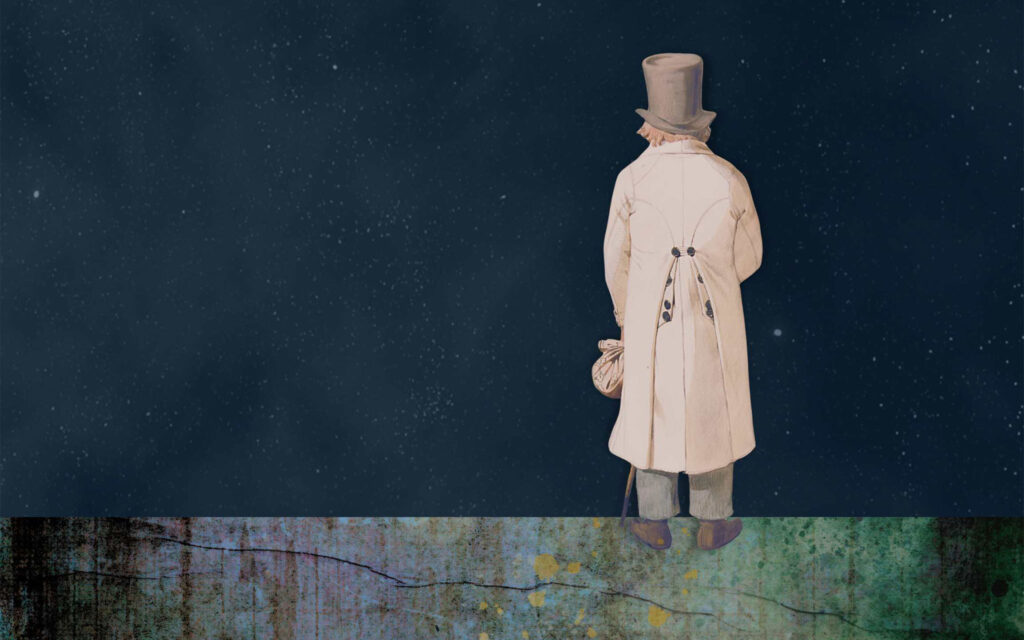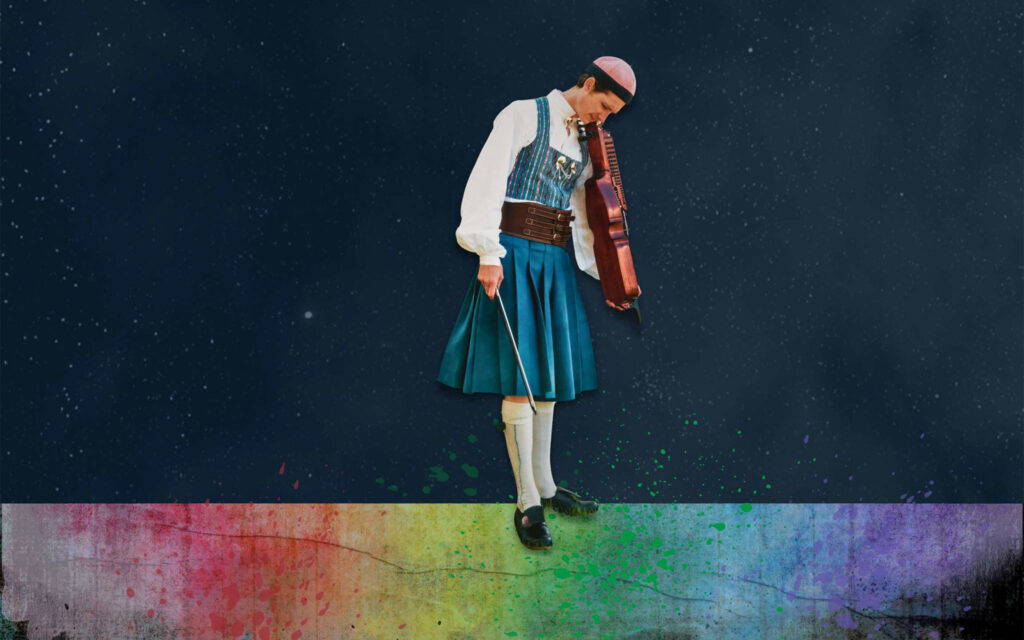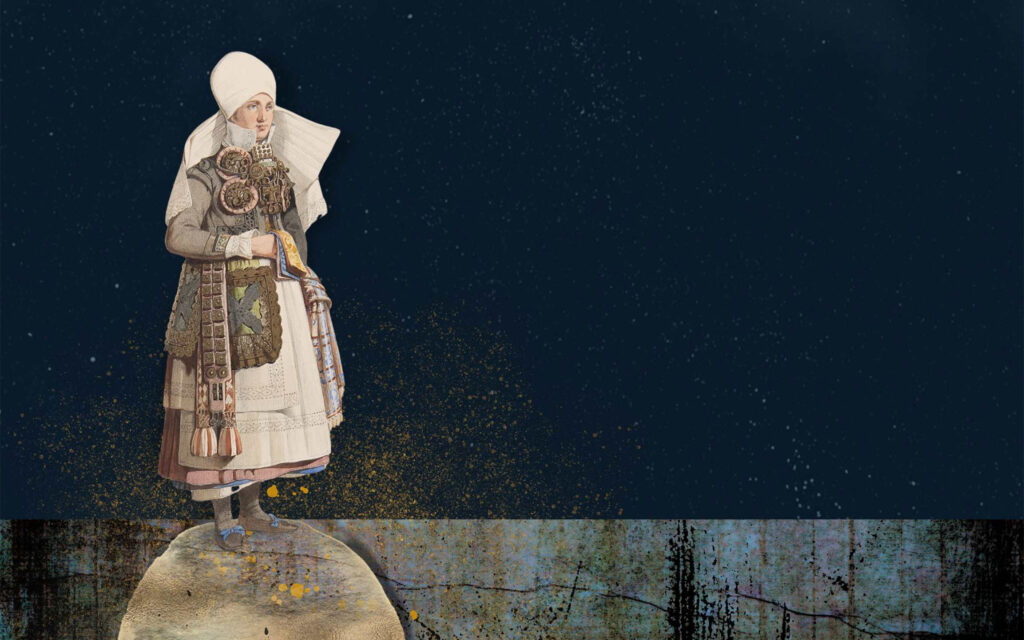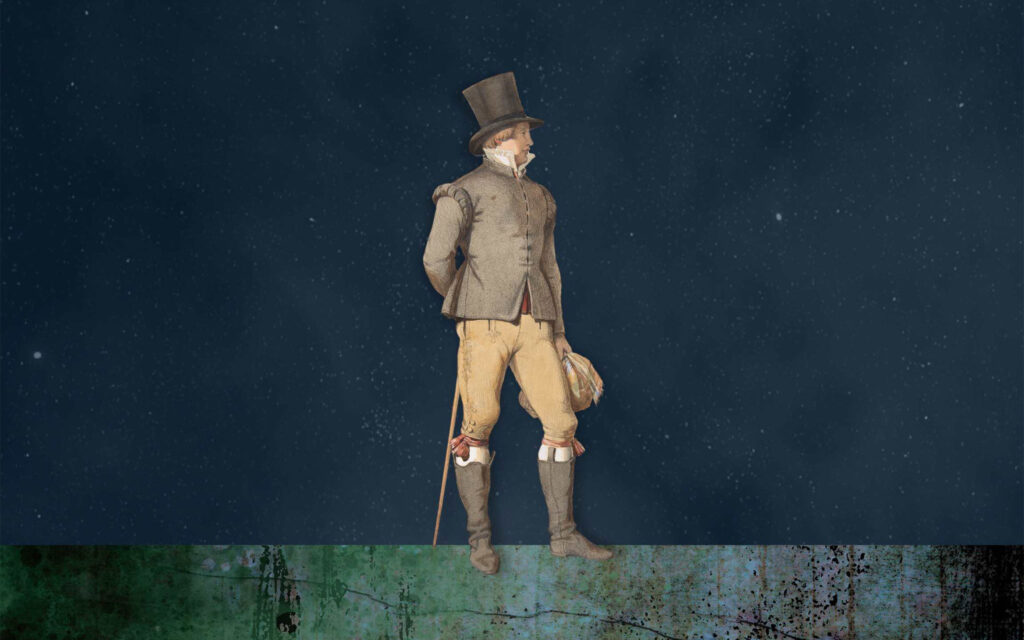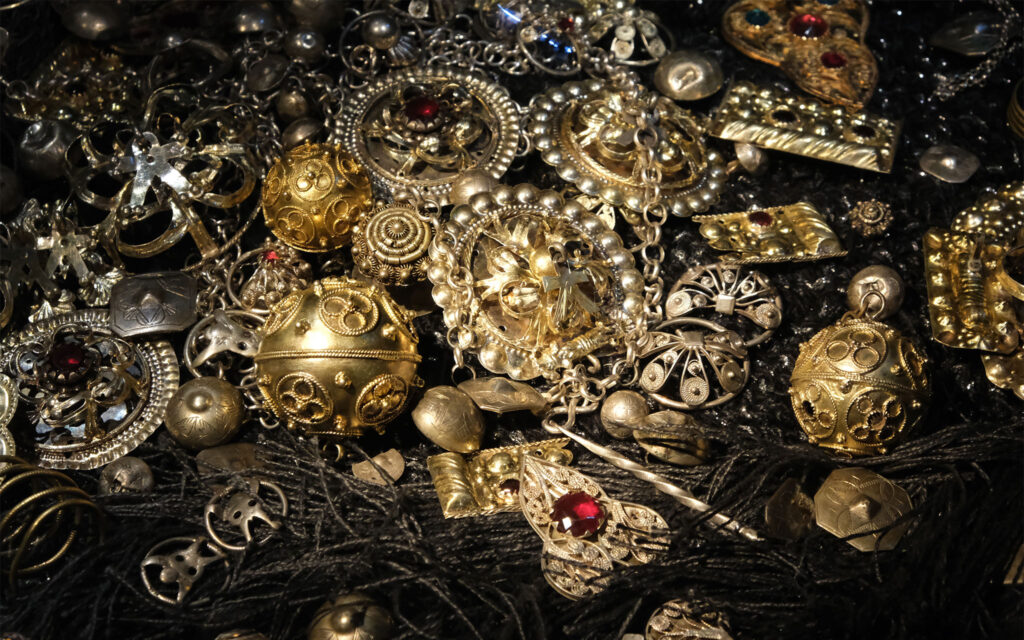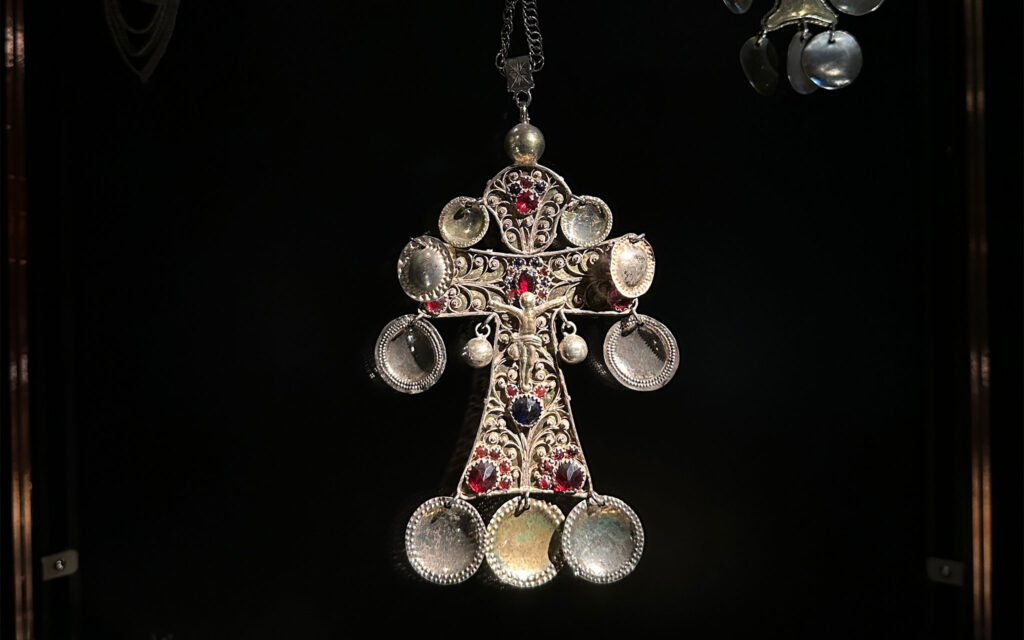(Exhibition text in English, referring to a QR code in the exhibition)
Peasant shifts and shirts were not underwear in a strict sense. Visible beneath bodices, jackets and vests, they were often elaborately decorated with embroidery and lace. During harvest, the shift was transformed into a dress with a waistband. Only the old-fashioned strap-shift from southwestern Scania was worn completely hidden. In south-eastern Scania, shirts and shifts had high, starched collars that could reach above the ears. The groom’s shirt was embroidered with the couple’s monograms and worn only twice: on the wedding day and at burial.
Long trousers are older than breeches and were worn by farmers and fishermen long before they became fashionable. In Scania, long trousers were used throughout the 18th century, though breeches were more common and part of formal dress. In summer, men wore linen shirts and trousers, sometimes with leather trousers on top to protect the fabric.
